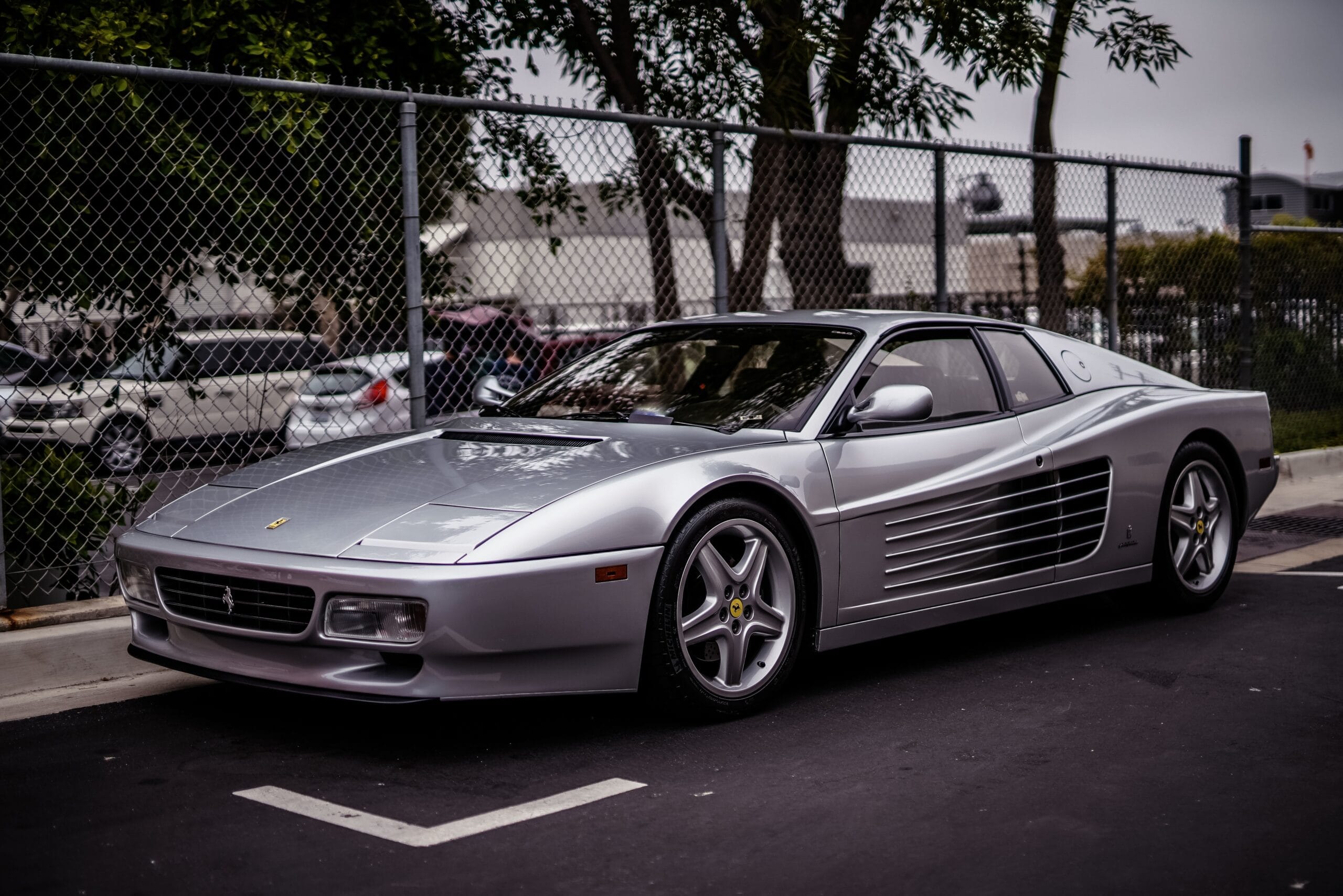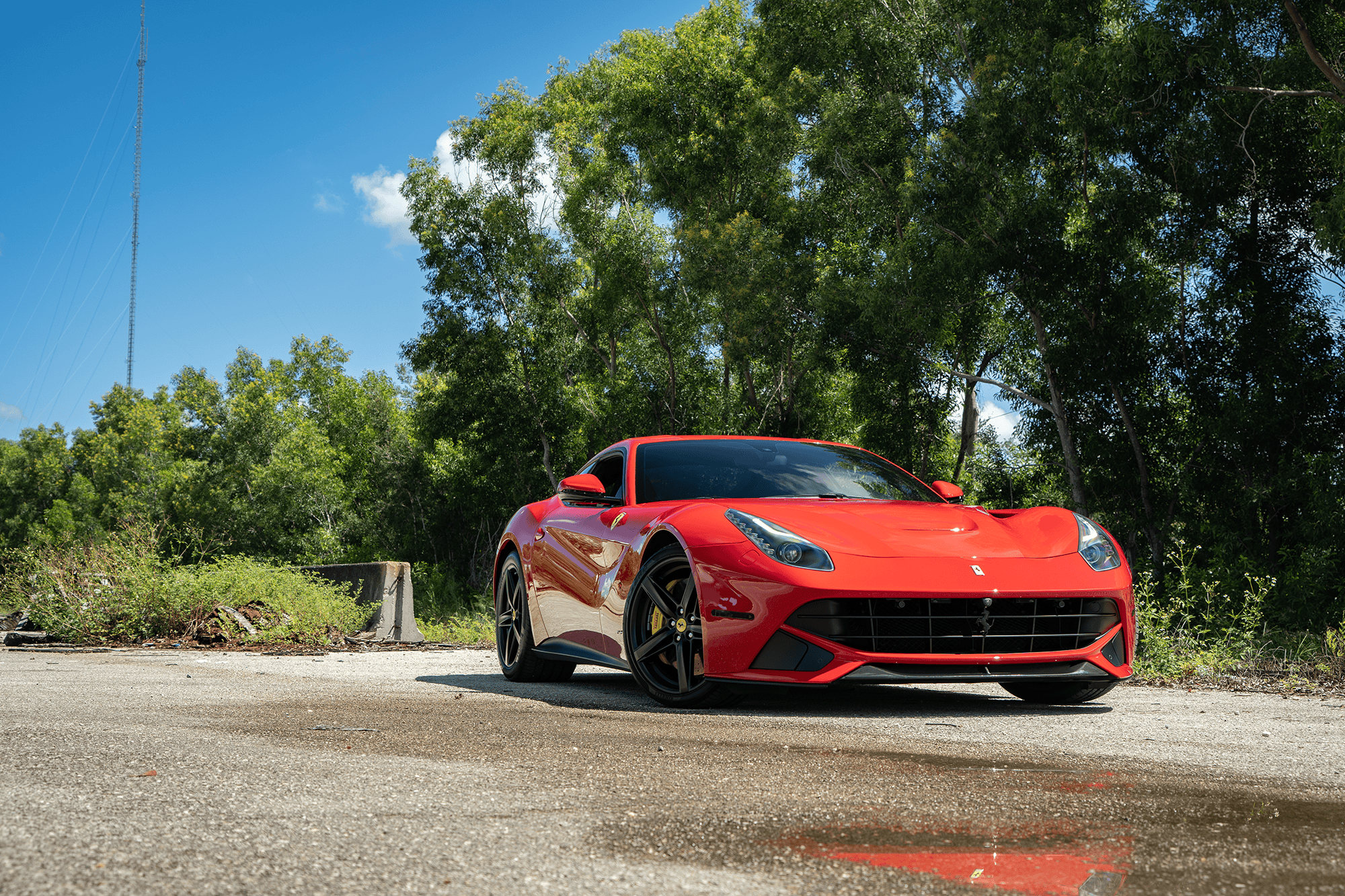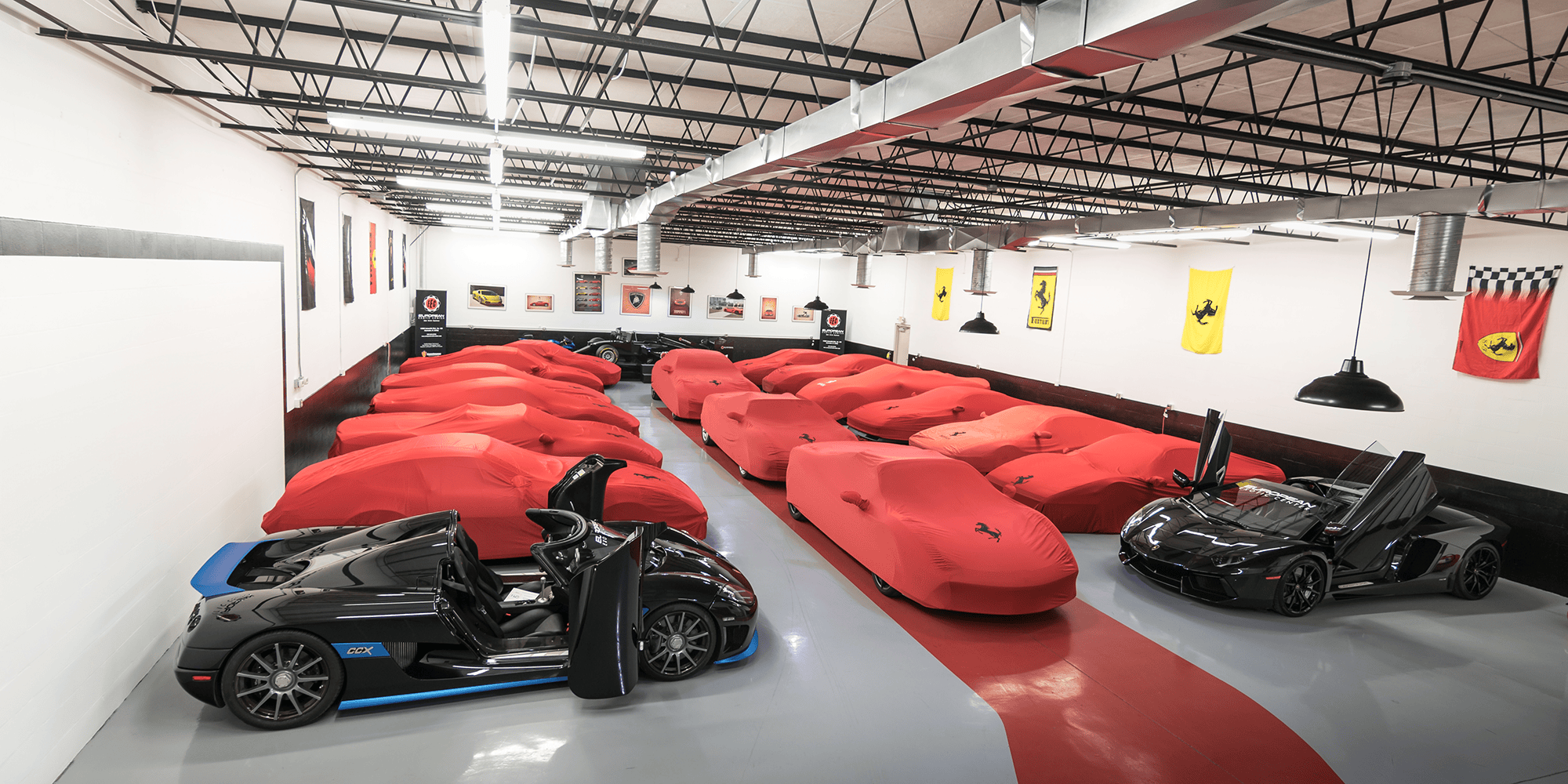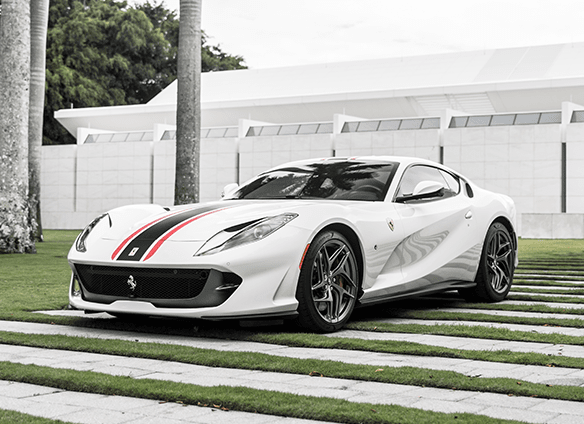Old Ferrari vs New Ferrari: Which Is The Better Investment?
Considering investing in a Ferrari? You’re not alone. Ferraris are seen by many exotic car collectors as a sound investment, as long as you choose wisely. Investing in the right Ferrari model can lead to appreciation in the triple digits, whereas the wrong model may result in steady depreciation and low demand.
Read on to learn all about investing in Ferraris, including a comparison of old Ferraris vs new Ferraris and which presents the better investment.
What Makes an Old Ferrari Classic?
When we talk about classic Ferrari’s, we’re typically talking about Ferrari models from the 1960s through the 1980s. Some of the most iconic classic Ferraris include:
- Ferrari 250 GTO: Only 36 of this iconic 1960’s Ferrari were ever made. At the time, the 250 GTO was known for its groundbreaking top speed of 174 mph and its many racing victories. Today, these are some of the most valuable Ferraris in the world.
- Ferrari F40: The Ferrari F40 was produced from 1987 to 1992. It was Enzo Ferrari’s last “personally-approved” car.
- Ferrari 275 GTB: Another iconic 1960’s Ferrari model. Today, it’s sought after for its rarity and groundbreaking design and engineering.
- Ferrari Testarossa: The 1980’s Ferrari Testarossa is revered for its cultural impact as the featured car in the Miami Vice series.
Classic Ferraris are among the most sought-after for their rarity and cultural significance, and their value reflects their desirability. Many classic Ferraris have seen triple-digit appreciation over the past decade. They’ve become known for their record-breaking auction prices, like the 1962 Ferrari 250 GTO, which sold for $48.4 million. Overall, classic Ferraris live up to their reputation as safe investments for exotic car collectors.
Modern Marvels: What Sets a New Ferrari Apart?
Modern Ferraris are those produced from the 2000s onwards. While these cars do tend to experience some initial depreciation, Ferraris are known for their comparably slower depreciation than other exotic car models. Over time, depreciation slows and ultimately tapers off.
Many modern Ferraris are fully depreciated and hold stable value, while rare or limited edition modern Ferrari models have already experienced significant appreciation.
Despite their modernity, the Ferrari 599 GTO and the 458 Speciale A have both appreciated in value due to their rarity. Each has sold for over $1 million several times. On the other hand, mass produced models like the Ferrari F430 or the 360 Modena aren’t expected to see appreciation.
When assessing the investment value of a new Ferrari vs old Ferrari, it’s important to look at the full picture, beyond just production numbers. These cars tend to be much more susceptible to market dynamics than classic Ferraris. The release of new, faster Ferraris can significantly impact the value of other modern Ferraris, often leading to volatility and allowing for potential depreciation of previously high-value models.
Ferrari Legacy: Celebrating Iconic Rarity and Historical Significance

Testarossa
The rarity of old Ferraris vs new Ferraris contributes to their legendary status in the exotic car collector market. Between 1960 and 2000, only about 8,000 Ferraris were produced, making them highly sought after based on scarcity alone.
But rarity isn’t the only factor contributing to the value of old Ferraris. These cars are highly desired for their historical and cultural value, too. From Ferrari’s successes in Formula 1 to their iconic style and countless on-screen appearances, the Ferrari name has become synonymous with luxury, notoriety, and automotive excellence.
Investment Fundamentals: Understanding Classic Ferrari Investment and Modern Ferrari Value
Old or new, there are a few primary factors that contribute to a Ferrari’s investment value. These include:
- Rarity: As long as demand persists, a rare Ferrari is always an excellent investment. Rarity tends to be more common among old Ferraris vs new Ferraris, but some more recent models were produced in limited numbers that boost their appreciation.
- Historical significance: Whether a model that once appeared in a cult-classic TV show or a specific car previously owned by a celebrity, a Ferrari’s history can greatly impact its value.
- Maintenance costs: In order for a Ferrari to retain its value, it needs to be properly maintained. Whether a classic or modern Ferrari, if you can’t afford its maintenance cost, it isn’t a good investment.
While classic Ferraris have shown impressive appreciation rates, ranging from 143% appreciation for entry-level Ferraris to up to 500% appreciation for high-end models, they aren’t the only Ferraris with investment potential. Rare modern Ferraris or those with historical significance may experience similar appreciation down the line.
Deep Dive: Evaluating Investment Potential in Ferraris
Interested in investing in a Ferrari? Read on to learn how to evaluate a Ferrari’s investment potential.
Assessing Rarity, Historical Value, and Authenticity
The first factor to look at when assessing a Ferrari’s potential as a good investment is its production numbers. Rarity and limited production numbers of classic Ferraris are a strong indicator of potential appreciation. For instance, the Ferrari 250 GTO and the F40 have become investment benchmarks, largely due to their particularly limited production.
Cultural or historical significance also plays a large role in investment potential. A Ferrari that has a storied past that’s been authenticated and properly documented can hold a significant value, like a Ferrari that’s won a race or been owned by a notable person.
Comparing Performance, Design Innovations, and Engineering Advancements
Whether an old Ferrari or new Ferrari, the luxury automotive manufacturer has always been ahead of its time. Classic Ferrari models appeal to those who seek iconic styling and engineering feats, whereas new Ferraris attract investors looking for the latest technological advances.
For this reason, classic Ferraris tend to hold their value better than modern. Within a few years, a modern Ferrari that was once sought-after for its cutting edge speed and technology can become outdated and lose its value.
Navigating Market Trends: Classic Versus Modern Ferrari Investment Outlook
The market demand for classic Ferraris tends to be much stronger than modern Ferraris. Older styles have a universal appeal, leading to their strong, international collector base. Their market volatility tends to be quite low and the value of classic Ferraris experiences steady growth over time.
Modern Ferraris, on the other hand, have a market demand that’s much more closely driven by model rarity and experiences greater volatility. For instance, in 2023, front-engine Ferraris experienced a lot of market volatility as inflated Ferrari values throughout the pandemic years returned to normal.
Avoiding Pitfalls: Common Errors in Ferrari Collector Investments
No matter which year Ferrari you’re looking to invest in, avoid these common pitfalls for Ferrari investors.
Overpaying for Underappreciated or Mis-Maintained Models
Overpaying is a surefire way to drive down a car’s investment value. It’s important to make sure you’re not paying too much for a Ferrari model that lacks strong historical or cultural demand.
It’s also vital to ensure the specific car you’re buying is in good condition and has been properly maintained with thorough records. Purchasing a car with spotty maintenance or hidden mechanical issues can have a dramatic impact on your investment.
Neglecting Key Maintenance and Authenticity Considerations
Upkeep is also essential to maintaining your investment. Stay on top of regular Ferrari maintenance tasks like fluid checks, oil changes, and brake pad replacements, as well as any significant repairs. Neglect can significantly reduce your car’s value.
Keep thorough documentation of all maintenance, upgrades, and more. Exotic car buyers want to see that a car has been well taken care of.
Frequently Asked Questions
Which Ferrari Type Offers Better Long-Term Value?
While demand exists for both classic and modern Ferraris, classic models tend to offer better long-term investment value than newer ones. Not only were classic models produced in more limited numbers, but they tend to have significantly less volatility than newer models. While some newer models may appreciate in value, they are much more susceptible to market fluctuation and their value can drop at a moment’s notice.
How Do Rarity and Condition Impact Investment Decisions?
Factors with the most significant impact on a Ferrari’s investment value include:
- Rarity: Limited production is the primary indicator of a Ferrari’s investment potential due to simple supply and demand. When more car collectors want a Ferrari than models available, their value goes up.
- Historical significance: A model with historical notoriety, whether racing wins or on-screen appearances, tends to be of much greater value.
- Condition: A well-maintained car with thorough records will always be worth more than a poorly-maintained Ferrari.
Are Maintenance Costs a Major Factor in Ferrari Investments?
Yes, maintenance costs can have a dramatic impact on the investment potential of a Ferrari. These cars require ongoing maintenance to retain or increase their value over time. Neglected models may need costly restoration, too. Calculate these costs when determining your Ferrari’s investment potential.
Can New Ferraris Outperform Classic Models in the Collector Car Market?
While it is possible that a new Ferrari may outperform classic models in terms of value, the value of a modern Ferrari tends to be much less stable. A newer car may experience a significant uptick in value followed by a sudden drop, whereas classic Ferrari models tend to experience steady appreciation.
Conclusion: Weighing Ferrari Investment Tradeoffs
Rare classic Ferraris have a strong track record of steady appreciation, making them a strong investment opportunity for those who can afford it. Modern Ferraris, on the other hand, require careful selection to pick an investment Ferrari with value that will stick.
If you’re planning on investment in a Ferrari, it’s essential to understand market trends, maintenance requirements, and the intrinsic qualities of each car. Doing so can help you make a sound investment decision in the exotic car market.

 WHY US
WHY US
 SELL YOUR CAR
SELL YOUR CAR
 TESTIMONIALS
TESTIMONIALS
 FAQ
FAQ
 CONTACT US
CONTACT US








